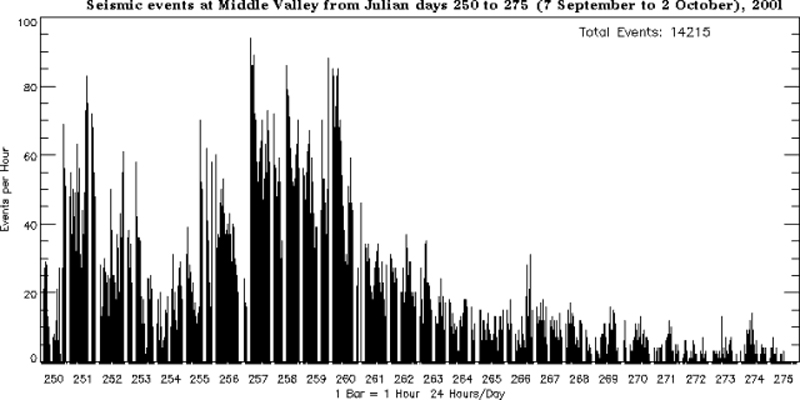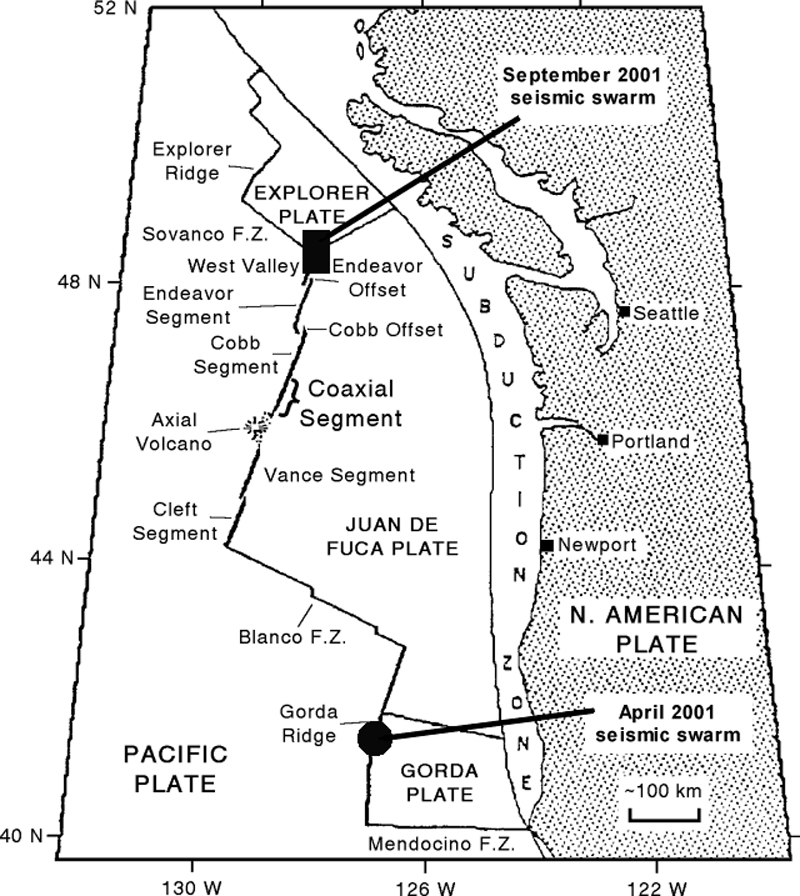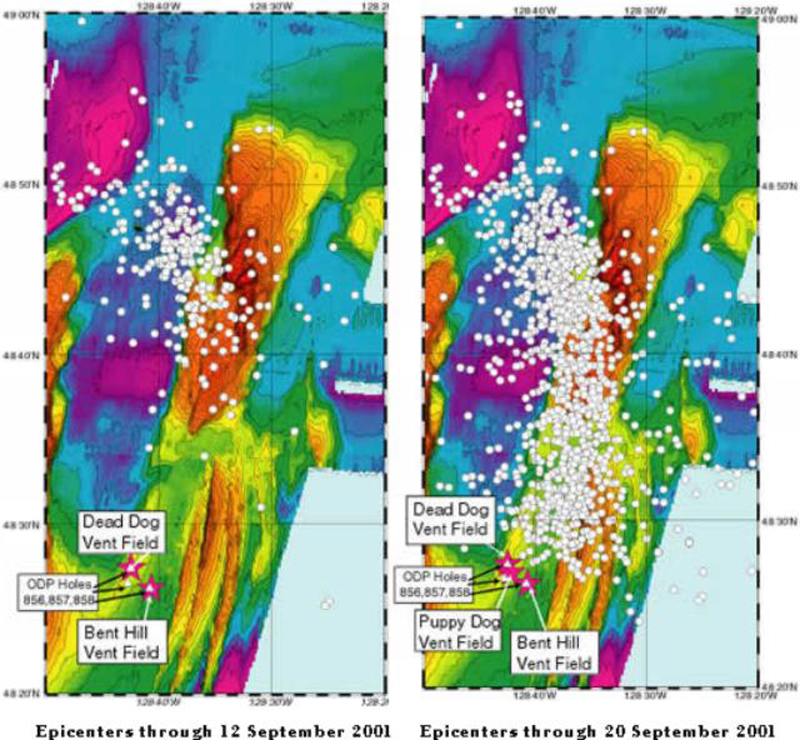Report on West Valley Segment (Canada) — September 2001
Bulletin of the Global Volcanism Network, vol. 26, no. 9 (September 2001)
Managing Editor: Richard Wunderman.
West Valley Segment (Canada) T-wave swarm devoid of tremor during 6-27 September 2001
Please cite this report as:
Global Volcanism Program, 2001. Report on West Valley Segment (Canada) (Wunderman, R., ed.). Bulletin of the Global Volcanism Network, 26:9. Smithsonian Institution. https://doi.org/10.5479/si.GVP.BGVN200109-331005
West Valley Segment
Canada
48.78°N, 128.64°W; summit elev. -2550 m
All times are local (unless otherwise noted)
At approximately 2030 on 6 September 2001 a large seismic swarm was detected at the N end of the Juan de Fuca Ridge (figure 1). Just N of this point the ridge becomes truncated by the Sovanco Fracture Zone. The seismicity had some of the primary characteristics of magmatic activity, including vigorous swarms of small earthquakes, but did not include any detectable continuous tremor. After the initial event, activity increased and epicenters propagated southward to within 5 km of known hydrothermal vents and drill holes (figure 2). By 27 September, after nearly 14,000 detected earthquakes, seismic activity had slowed to near-background levels (figure 3). During 4-7 October, the Canadian RV Tully visited the site for water column sampling.
 |
Figure 3. Histogram of seismic events along the West Valley Segment of the Juan de Fuca Ridge during 7 September through 2 October 2001. Courtesy of the PMEL Vent Acoustics Program. |
The land seismic network operated by the Pacific Geoscience Center of the Geological Survey of Canada recorded and produced moment tensor solutions for several of the larger events, indicating a mixture of normal and strike-slip motion. Strike-slip events are oriented parallel to Juan de Fuca orientation (15°) and are likely associated with the ridge system. The complex interplay between the Nootka fault and the Juan de Fuca volcanic system results in a diffuse triple junction with correspondingly complex stress fields. Further detailed examination of the joint data sets will be required to unravel the total picture. A description of the site can be found in Davis and Villinger (1992).
The general location of the swarm (48.78°N, 128.64°W) was on the eastern edge of a large sedimented feature called Middle Valley. The Juan de Fuca Ridge is located just N of the Gorda Ridge, along the boundary between the Juan de Fuca and Pacific plates. A seismic swarm along the Jackson Segment of the Gorda Ridge (figure 8) occurred in early April 2001 (BGVN 26:08). The seismic activity was detected by NOAA's Pacific Marine Environmental Laboratory (PMEL) T-phase Monitoring System. They access the U.S. Navy's SOund SUrveillance System (SOSUS) to monitor ocean acoustics.
Reference. Davis, E.E., and Villinger, H., 1992, Proceedings of the Ocean Drilling Program, Initial Reports, v. 139, p. 9-41.
Geological Summary. The West Valley Segment is the northern-most part of the Juan de Fuca Ridge, intersecting the Sovanco Fracture Zone and offset from the Endeavour Segment to the south.
Information Contacts: Chris Fox and Robert Dziak, Vents Acoustics Program, NOAA Pacific Marine Environmental Laboratory (PMEL), 2115 SE Osu Drive, Newport, OR 97365 USA (URL: https://www.pmel.noaa.gov/eoi/); Garry Rogers, Geological Survey of Canada, GSC Pacific - Sidney Subdivision, Pacific Geoscience Centre, P.O. Box 6000, 9860 West Saanich Road, Sidney, BC V8L 4B2, Canada (URL: http://www.earthquakescanada.nrcan.gc.ca/); InterRidge Office, Ocean Research Institute, University of Tokyo, 1-15-1 Minamidai, Nakano-ku, Tokyo 164-8639, Japan (URL: http://www.interridge.org/).



